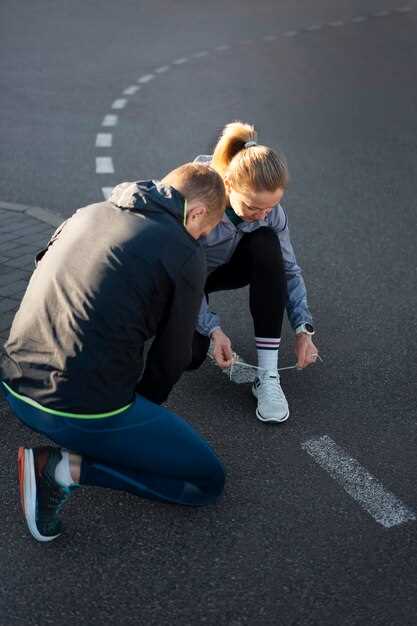
Experiencing a track day for the first time can be both exhilarating and nerve-wracking. The excitement of racing on a closed circuit, away from the constraints of public roads, is like nothing else. However, it’s essential to arrive well-prepared to maximize the enjoyment and safety of this unique automotive adventure.
One of the primary aspects you should focus on during your prep is understanding the track layout. Every race track has its own distinct characteristics, including various turns, elevation changes, and straightaways. Familiarizing yourself with the track map and studying video footage can significantly enhance your overall performance and confidence on the day of the event.
Participating in a track day involves more than just showing up with your vehicle. Consideration for safety gear, including helmets and protective clothing, is crucial. Many organizations require specific safety standards, so checking these requirements beforehand can save you time and stress on race day.
Another important element of preparation is understanding the etiquette of the track. Knowing when to yield to faster cars and how to properly signal during sessions will help maintain a safe environment for everyone participating. Your first track day is an opportunity not just to push limits but also to build skills and camaraderie with fellow driving enthusiasts.
Choosing the Right Track and Event for Beginners
Selecting the correct track and event for your first track day is crucial for a positive experience. Beginner-friendly events focus on safety, skill development, and instructive environments. Research potential tracks in your area that host beginner days, ensuring they offer the necessary amenities and support.
Consider the following factors when choosing your track:
| Criteria | Importance | Example |
|---|---|---|
| Track Layout | Beginner-friendly tracks have simpler layouts with fewer complex turns. | Local autocross courses or smaller road tracks. |
| Instruction Availability | Look for events that include professional instructors to guide you. | Track days with one-on-one coaching. |
| Safety Features | Tracks with better safety measures can enhance your confidence. | Built-in run-off areas and safety barriers. |
| Community Support | A supportive community can provide tips and encouragement. | Establishments that promote camaraderie among participants. |
After identifying suitable tracks, ensure you register for beginner-specific events. These events usually have reduced speed limits, specific groupings based on experience, and controlled environments. Proper preparation, including vehicle readiness and personal skill assessment, can further enhance your first track day experience. Choose wisely to make your introduction to track driving enjoyable and memorable.
Necessary Gear and Equipment for Your First Track Day
Preparing for your first track day can be an exhilarating yet daunting experience. Having the right gear and equipment is essential to ensure your comfort, safety, and overall enjoyment during the event. Below is a concise list of what you need to prioritize as you prep for your track day.
1. Helmet: A DOT or Snell-rated helmet is mandatory for track days. Ensure that it fits snugly without being uncomfortable. Check for the latest rating to ensure it meets safety standards.
2. Racing Suit: A one-piece or two-piece suit made from fire-resistant materials is crucial. This gear is designed to protect you in the unfortunate event of an incident. Remember, comfort and flexibility are key, as you will be in the car for extended periods during the race.
3. Gloves: Choose gloves that allow for a good grip on the steering wheel and offer protection from heat and abrasion. Look for gloves that complement your racing suit for a unified look.
4. Footwear: Proper racing shoes are designed to provide optimal pedal feel and control. They should be lightweight, comfortable, and fire-resistant. Avoid regular sneakers as they can restrict movement and may not provide adequate protection.
5. Underwear: Fire-resistant underwear, including balaclavas and socks, is highly recommended. These garments offer an additional layer of protection and help keep you cool on warmer days.
6. Track-specific Vehicle Setup: Ensure your car is track-ready. This may include checking tire pressure, fluid levels, and ensuring your brakes are in optimal condition. Consider investing in track tires, which offer better grip compared to standard tires.
7. Tools and Spare Parts: A basic toolkit and spare parts like oil, coolant, and tools for minor adjustments can come in handy. Think of common issues that may arise and prep accordingly.
8. Hydration and Snacks: Staying hydrated throughout the day is vital. Pack a cooler with water and nutritious snacks to maintain your energy levels during long sessions on the track.
By ensuring you have the necessary gear and equipment, you will set yourself up for a successful first track day. With the right preparation and mindset, you’re ready to embrace the experience and enjoy the thrill of the track.
Understanding Track Day Etiquette and Safety Rules

Participating in a track day is an exciting opportunity to explore the limits of your race car, but it comes with a responsibility to ensure safety and respect for others on the track. Understanding track day etiquette and safety rules is essential for a successful and enjoyable experience.
Preparation is Key
Before arriving at the track, ensure that your vehicle is in top condition. Check tire pressure, fluid levels, and brakes. Participants should also familiarize themselves with the specific rules and requirements of the track you are attending. Proper prep not only ensures your safety but also helps maintain the track’s integrity for all users.
Observe the Flags
During a track day, various flags are used to communicate important information. A yellow flag indicates caution, usually due to an incident ahead. A red flag signals that the session is halted, often due to an emergency. Understanding these signals and responding promptly is vital for your safety and that of others.
Mind Your Speed
While the thrill of speed is a significant part of the race experience, it’s essential to drive within your limits. Each driver has varying skill levels, and therefore, maintaining a controlled pace is crucial, especially in mixed sessions where different experience levels are present. Always gauge your speed in relation to the traffic around you.
Maintain Distance
Keeping a safe distance between vehicles is a fundamental rule. This space allows for unexpected maneuvers and helps avoid collisions. If you are being overtaken, move aside smoothly and safely, allowing faster cars to pass without disrupting their momentum.
Respect Other Drivers
Track day participants come from different backgrounds, and all share a passion for motorsport. Treat fellow drivers with respect, whether they are beginners or experienced racers. Communicate your intentions through signals and avoid aggressive behavior on the track.
Participate in Briefings
Most track days commence with a briefing session. This is a valuable opportunity to learn about the specific rules of the day, the layout of the track, and any recent changes. Attend these briefings and ask questions if anything is unclear, ensuring you are well-informed before your on-track time begins.
Your Responsibilities as a Driver
As a driver, you have a responsibility not just to yourself but to everyone on and off the track. Follow all safety rules, use proper safety gear, and respect the environment. If you encounter a situation where you feel unsafe or uncomfortable, don’t hesitate to communicate with the track officials.
By understanding and adhering to these etiquette and safety rules, your track day experience will be rewarding, thrilling, and safe, paving the way for future racetrack endeavors.
Preparing Your Vehicle: Maintenance and Modifications
Before heading to your first track day, it’s crucial to ensure your vehicle is in optimal condition. Proper maintenance and selected modifications can enhance performance and safety during your track experience.
Here are essential maintenance tasks to perform:
- Fluid Levels: Check and top off engine oil, brake fluid, coolant, and transmission fluid. These fluids play a critical role in maintaining performance and reliability on the track.
- Tires: Inspect tire tread depth and check for uneven wear. Ensure your tires are suitable for track use, with a focus on grip and durability. Proper tire pressure is also essential; inflate them according to the manufacturer’s recommendations for track conditions.
- Brakes: Examine your brake pads and rotors for wear. Replace any worn components to prevent brake fade during intense driving. Consider upgrading to performance pads for better heat resistance.
- Suspension: Inspect shock absorbers and struts for leaks or damage. Upgrading suspension components can enhance handling and stability on the track.
- Battery: Ensure your battery is secure and has a full charge. Consider replacing an old battery that may struggle under track conditions.
In addition to maintenance, certain modifications can significantly improve your car’s track performance:
- Performance Tires: Investing in high-performance tires designed for track use can greatly enhance grip and handling.
- Cold Air Intake: A cold air intake system can increase horsepower by improving airflow to the engine.
- ECU Tuning: An ECU tune can optimize your vehicle’s performance settings for track use, increasing power and responsiveness.
- Weight Reduction: Removing unnecessary items from your vehicle can improve power-to-weight ratio, allowing for better acceleration and handling.
- Safety Equipment: Install a roll cage, racing seats, and harnesses to enhance safety, especially during competitive laps.
Thorough preparation can make your first track day both enjoyable and successful. Ensuring your vehicle is well maintained and appropriately modified will help you focus on your performance and the exhilarating experience of racing on the track.
What to Do on the Day of the Event: Schedule and Activities
On the day of your first track day experience, preparation is key to making the most of your time on the track. Arrive early to ensure you have enough time to check in, get your gear organized, and feel comfortable in the environment. Most events will have a set schedule, so familiarize yourself with the timetable provided by the organizers, which usually includes driver meetings, practice sessions, and races.
Start your day with a mandatory drivers’ briefing. This meeting will cover essential rules, flags used during sessions, and safety protocols. It’s crucial to pay close attention as this information will be vital for you and others on the track. After the briefing, it’s time to prep your vehicle; check tire pressures, fluid levels, and ensure everything is secure before hitting the track.
Once you’re ready, multiple track sessions will be divided throughout the day, allowing you time to familiarize yourself with the layout and improve your skills. Typically, sessions are scheduled in groups based on experience, so you will be racing alongside drivers with similar skill levels. Pay attention to the track conditions, and use your time wisely to learn and adapt your technique.
In between sessions, take the opportunity to relax and connect with fellow drivers. Share experiences, hear tips, and watch others on track. This social aspect can enhance your understanding and enjoyment of racing. Keep hydrated and stay focused; the excitement of your first day can be overwhelming, but maintaining your composure is essential for safety and performance.
Finally, at the end of the day, take time to reflect on your experiences. Engage with instructors or more experienced drivers to get feedback on your performance. This will not only help you grow as a driver but also foster a sense of community within the racing environment. Enjoy every moment of your first track day adventure!
Tips for Managing Nerves and Building Confidence on Track

Preparing for your first track day can be an exhilarating yet nerve-wracking experience. It’s important to manage those nerves effectively to ensure a smooth and enjoyable day. One key step is to thoroughly prep your vehicle and gear ahead of time. Knowing that everything is in top condition helps alleviate anxiety.
Familiarize yourself with the track layout before arriving. Many organizations provide maps or videos of the circuit, which can help you visualize your first race. The more you know about the turns and the overall setup, the more relaxed you’ll feel when it comes time to hit the asphalt.
Arrive early to the track to give yourself plenty of time to adjust. Use this time to walk around the pit area, observe other drivers, and get a feel for the environment. Engaging with experienced drivers can provide valuable insights and boost your confidence. Don’t hesitate to ask questions; the racing community is often eager to help newcomers.
When it’s finally time for your first session, start slow. Take the initial laps to build up your comfort level and gradually increase your pace. This method allows you to understand the limits of both yourself and your vehicle without overwhelming your senses. Confidence grows as you become more familiar with the car’s handling and the track conditions.
Focus on your breathing. If nerves begin to creep in, take a few deep breaths to calm yourself. Concentrate on your driving techniques rather than your anxiety. Remember that every seasoned racer was once a beginner, and it’s completely normal to feel anxious before your first lap. Embrace the excitement and channel it into your performance.
Lastly, keep a positive mindset throughout the day. Celebrate small victories, whether it’s mastering a corner or simply completing your first lap. Each accomplishment builds your confidence and prepares you for future track days. With practice and experience, those nerves will transform into enthusiasm for the thrill of racing.




